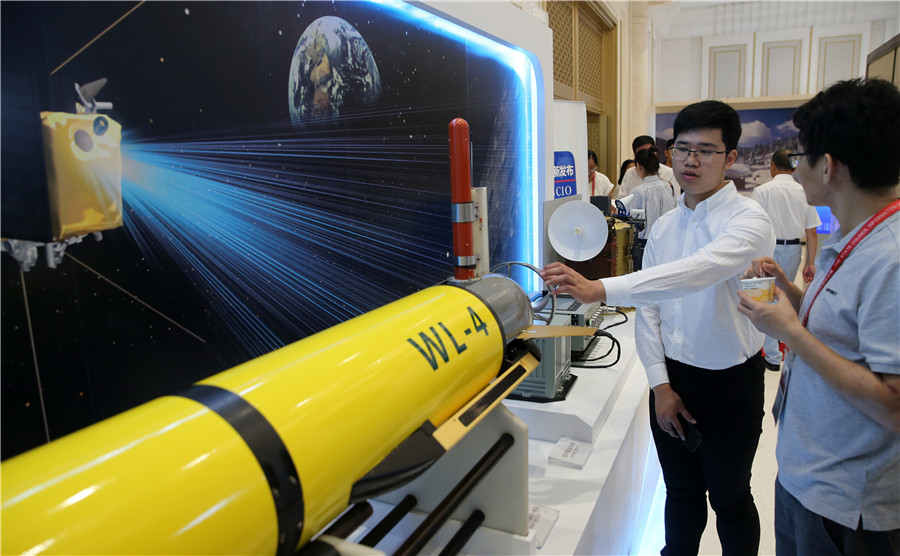Heilongjiang free trade zone to help reinvigorate northeast
The newly established China (Heilongjiang) Pilot Free Trade Zone will undertake more market-oriented reforms to reinvigorate the country's northeastern region and deepen trade ties with partners participating in the Belt and Road Initiative (BRI), senior officials said on Friday.
The newly established China (Heilongjiang) Pilot Free Trade Zone will undertake more market-oriented reforms to reinvigorate the country's northeastern region and deepen trade ties with partners participating in the Belt and Road Initiative (BRI), senior officials said on Friday.

Officials from northeast China's Heilongjiang province meet the press at a news conference held by the State Council Information Office of China on Sept. 6, 2019. [Photo by Liu Jian/China SCIO]
They gave the remarks after the State Council selected six newly established free trade zones in regions that include Heilongjiang, Jiangsu and Shandong, as well as the Guangxi Zhuang autonomous region. They would facilitate the opening-up of their economies and boost high-quality development through deeper and intensive reforms.
Heilongjiang borders Russia and the zone will help China improve trade ties with neighboring countries by transforming the region into a major logistics hub to support developments relating to the BRI, said Heilongjiang's Party secretary Zhang Qingwei.
The 119.9-square-kilometer Heilongjiang FTZ is divided into three parts. The first is the 80 square kilometers in the provincial capital of Harbin, the second roughly 20 square kilometers in China's largest border city of Heihe, and the third almost 20 square kilometers in Suifenhe.
Under the plan, Harbin will facilitate activities with Russia in high technology, the production of new materials, biomedicine, finance and tourism. Heihe will focus on energy cooperation and the production of environmentally friendly products, as well as the development of border infrastructure. Suifenhe will be mainly engaged in the import of wood and grain.
Heilongjiang Governor Wang Wentao said the FTZ will step up collaboration with Russia by facilitating the movement of people across the border and encouraging domestic companies to expand overseas, especially in Russia and Northeast Asia, emphasizing the transformation and upgrade of the area's real economy.
Bilateral trade between Heilongjiang and Russia reached 122.06 billion yuan (US$17.08 billion) in 2018, accounting for nearly 18% of China's total trade volume with Russia, data from the Heilongjiang provincial government showed.

A model of a marine robot made in Heilongjiang province is displayed during a news briefing in Beijing on Friday. [Photo/China Daily]
For the next step, Zhang said the province will consolidate its advantages in importing energy and resource commodities, developing the soybean processing business and importing other agricultural products from Russia. It will also build a number of cross-border industrial parks and participate in the development of free ports in Russia.
"The border trade is important," he said. "More Russian products come in than we ship to the country, because Russia has high quality food and agricultural products. We will continue to improve a law-based investment environment and advance the quality of foreign trade."
China's first free trade zone was set up in Shanghai in 2013. The country added four more FTZs in the coastal provinces of Fujian and Guangdong and the inland provinces of Shaanxi and Sichuan.
In the past five years, steps have been taken in investment, trade liberalization and facilitation, support of financial services for the real economy, and the transformation of government functions. FTZs have become a major force in attracting foreign investment, said Wang Shouwen, vice-minister of commerce.

